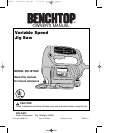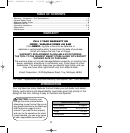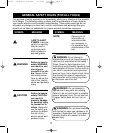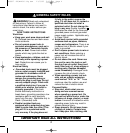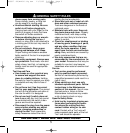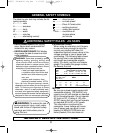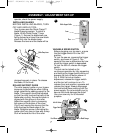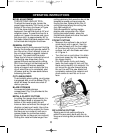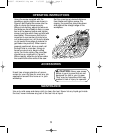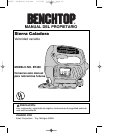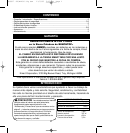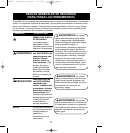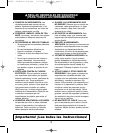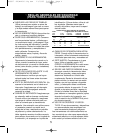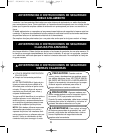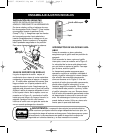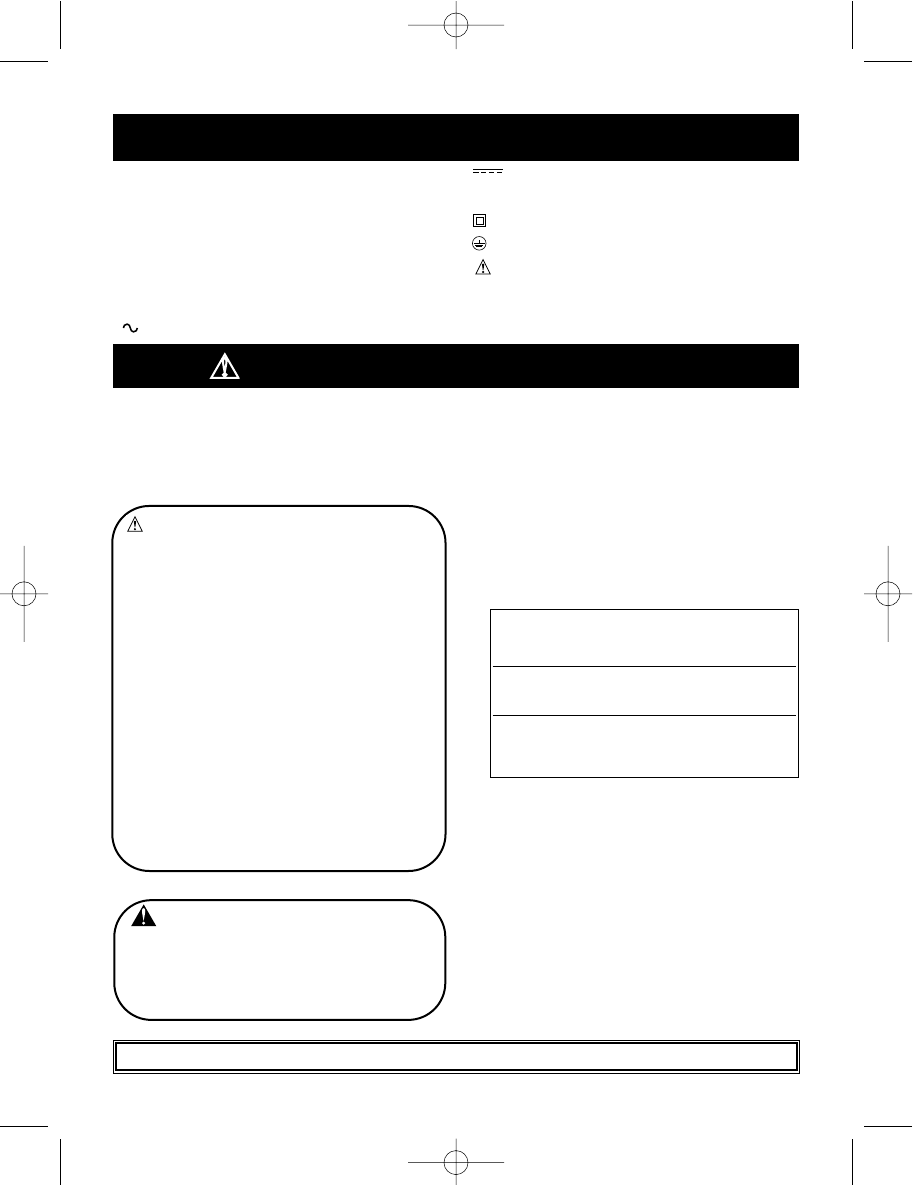
6
ADDITIONAL SAFETY RULES: JIG SAWS
IMPORTANT! READ ALL INSTRUCTIONS!
WARNING: To reduce the risk of
serious personal injury, read, under-
stand and follow all important safety
warnings and instructions prior to
using this tool.
The label on your tool may include the fol-
lowing symbols.
V ..............volts
A ..............amperes
Hz ............hertz
W ............watts
min ..........minutes
............alternating current
........direct current
n
o ............no load speed
.............
Class II Construction
............. earthing terminal
............safety alert symbol
.../min ......revolutions or
reciprocations
per minute
GENERAL SAFETY WARNINGS GENERAL SAFETY SYMBOLS
Minimum Gage for Cord Sets
Volts Total Length of Cord in Feet
120V 0-25 26-50 51-100 101-150
240V 0-50 51-100 101-200 201-300
Ampere Rating
More Not more AWG
Than Than
0-6 18 16 16 14
6-10 18 16 14 12
10 - 12 16 16 14 12
12 - 16 14 12 Not Recommended
• KEEP HANDS AWAY from cutting
area. Never reach underneath the
material for any reason.
• KEEP BLADES SHARP. Dull blades
may cause the saw to swerve or stall
under pressure.
EXTENSION CORDS
When using an extension cord, be sure
to use one heavy enough to carry the
current your product will draw. An
undersized cord will cause a drop in line
voltage resulting in loss of power and
overheating. The following table shows
the correct size to use depending on
cord length and nameplate ampere
rating. If in doubt, use the next heavier
gauge. The smaller the gauge number,
the heavier the cord
MOTOR
Be sure your power supply agrees with
nameplate marking. 120 Volts AC only
means your drill will operate on standard
60 Hz household power. Do not operate
AC tools on DC. A rating of 120 volts
AC/DC means that your tool will operate
on standard 60 Hz AC or DC power.
This information is printed on the
nameplate. Lower voltage will cause
loss of power and can result in over-
heating. All BENCHTOP® tools are
factory-tested; if this tool does not
WARNING: Some dust created by power
sanding, sawing, grinding, drilling, and
other construction activities contains
chemicals known to cause cancer, birth
defects or other reproductive harm. Some
examples of these chemicals are:
• lead from lead-based paints,
• crystalline silica from bricks and
cement and other masonry prod
ucts, and
• arsenic and chromium from
chemically-treated lumber. (CCA)
Your risk from these exposures varies,
depending on how often you do this type of
work. To reduce your exposure to these
chemicals: work in a well ventilated area,
and work with approved safety equipment,
such as those dust masks that are specially
designed to filter out microscopic particles..
389997 -00/BT400 Jig Saw 11/3/03 2:49 PM Page 6



